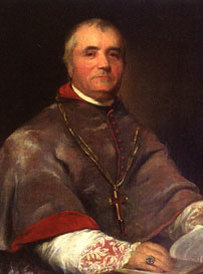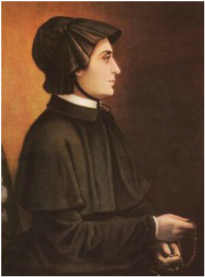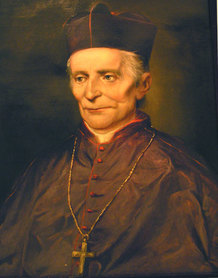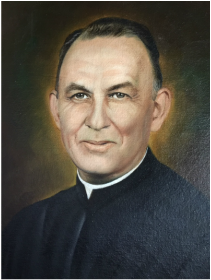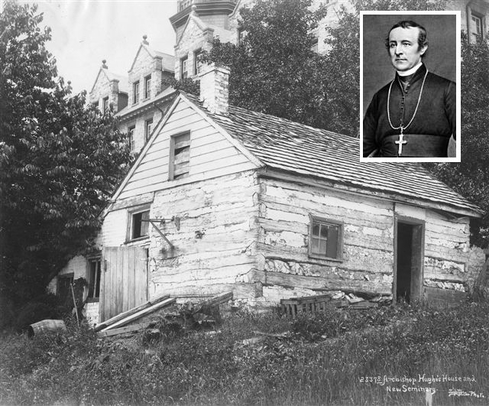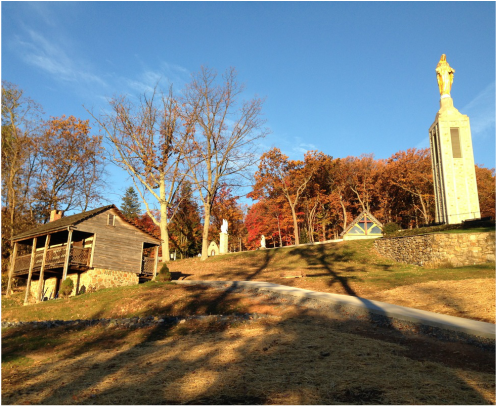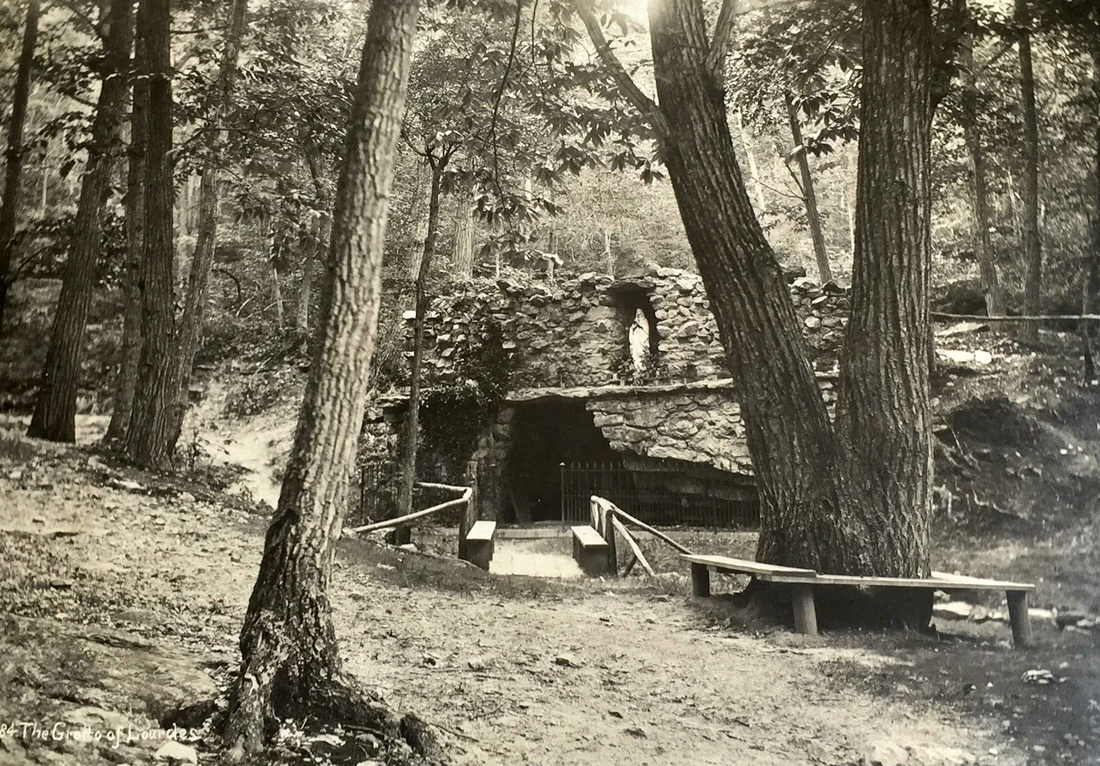|
Rev. John DuBois loved St. Mary’s Mountain. He found, high on this mountain, amid the wild flowers, a stream that divided and flowed around a great oak where a recessed grotto had formed under the trunk. Here, he erected a rude cross, a symbol of the holy work he was undertaking. This was the original Grotto. He built the church of St. Mary’s Chapel on the Hill in 1806 on the site of the present Pangborn Memorial Campanile and founded St. Mary’s College and Seminary in 1808. He later became Bishop of New York.
|
Elizabeth Ann Seton, foundress of the first United States womens' religious order, the Sisters of Charity, came to St. Mary’s Mountain in 1809. She and her sisters lived near the Grotto in a log cabin for six weeks until her home in the Emmitsburg was complete. Every Sunday, Mother Seton and the sisters attended Mass on the mountain. On Sunday afternoons, Mother Seton seated on a large rock (which is still here today, called Mother Seton's rock) taught Christian Doctrine to the children of the Mountain Parish. “We would then quench our thirst from a neighboring spring and ramble for a time at the grotto, a wild and picturesque spot…” St. Elizabeth Ann Seton
|
Rev. Simon Bruté, who later became the bishop of Vincennes, Indiana, was also one of the original stewards of the Grotto. He came to St. Mary’s Mountain in 1812 and blessed the spot with his sense of aesthetics and work ethic. He loved nature, believing the Lord was with us in all aspects of creation. The work he led to clean and beautify the Grotto was his tribute to God’s glory and the paths he laid are now the walkways (Corpus Christi Lane) we walk today. “The beautiful places of the Wilderness (of St. Joseph’s Valley) shall grow fat and the Hills (of Mount St. Mary’s) shall be girded about with joy.” Fr. Simon Bruté
|
Until 1958, the Grotto of Our Lady of Lourdes was merely a special yet secluded corner of campus, know to Mount St. Mary’s students and seminarians, but rarely visited by outsiders. Monsignor Phillips was appointed director of the National Shrine Grotto of Lourdes in 1958, and was named Grotto Chaplain by the Archdiocese of Baltimore when it was proclaimed a Public Oratory and National Shrine. After completely refurbishing the Shrine, he opened it to the public. He was responsible for erecting the Pangborn Memorial Campanile crowned with a 25-foot, statue of the Virgin Mary, and other significant monuments throughout the Grotto grounds.
|
The John Hughes Cabin, located below the Pangborn Campanile, is named for John Hughes, an immigrant Irishman who lived in the cabin in 1819, while supervising the gardens and taking classes in the seminary. Hughes was later ordained to the priesthood and became Bishop John DuBois’s coadjutor in New York City. As Ordinary, he distinguished himself as a leading defender of Catholics in the United States.
The stone wall reproduction of the Lourdes Grotto in France was initiated by President Fr. John A. Watterson and constructed by Mount St. Mary's seminarians in 1879. The purpose of the project was to commemorate the apparitions which had taken place 21 years earlier in France and which had been approved in 1862. (Photo taken by William Henry Tipton, circa 1890s)
The Pangborn Campanile, which has become a regional landmark, was built in 1964. St. Mary’s Chapel on the Hill opened in 1976.The Miller Family Visitors' Center opened in 2013.
The Pangborn Campanile, which has become a regional landmark, was built in 1964. St. Mary’s Chapel on the Hill opened in 1976.The Miller Family Visitors' Center opened in 2013.
|
National Shrine Grotto of Our Lady of Lourdes
on the campus of Mount St. Mary's University 16330 Grotto Road Emmitsburg, MD 21727 Phone: 301-447-5318 MASS: Monday–Friday 11:00 AM Saturday 12:00 PM Sunday (English) 12:00 PM Sunday (Español) 2:00 PM ADORATION: Saturday 10:45 AM–11:45 AM Sunday 10:45 AM–11:45 AM CONFESSION: Saturday 10:45 AM–11:45 AM Sunday 10:45 AM–11:45 AM FIRST SATURDAY DEVOTION: After 12:00 PM Mass every First Saturday |


